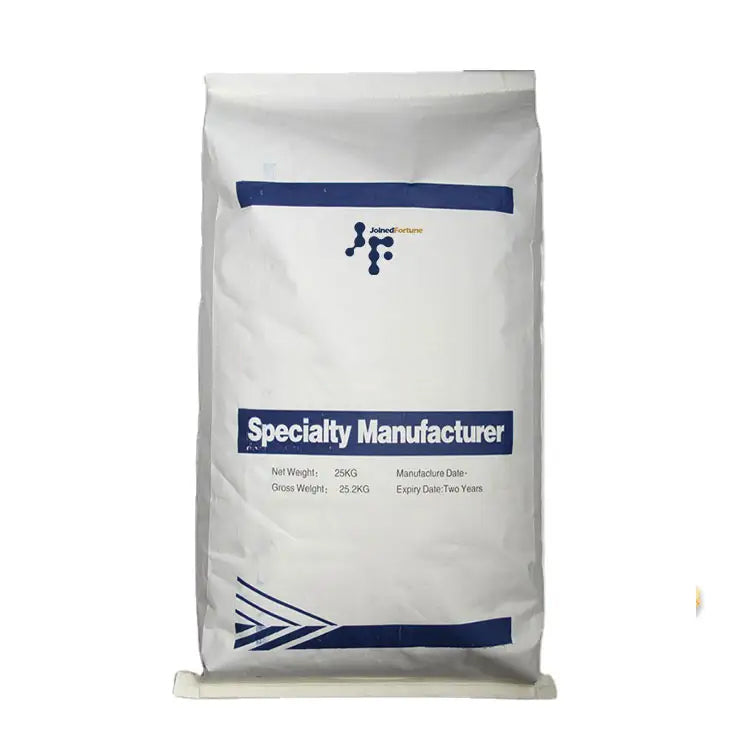Pea Starch
Pea Starch
Product Description:
Pea starch is a white, fine powder extracted from peas, specifically from the endosperm of the peas' seeds. It is a gluten-free and plant-based starch that offers several functional properties. Pea starch is primarily composed of amylose and amylopectin, two types of complex carbohydrates. It has a neutral taste and is highly digestible. Pea starch is known for its thickening and stabilizing abilities, making it a valuable ingredient in various applications.
Product Applications:
Food Industry: Pea starch is commonly used in the food industry for its thickening, gelling, and stabilizing properties. It is often used in soups, sauces, gravies, dressings, and bakery fillings to enhance texture and improve stability. Pea starch is also used in gluten-free food products as a substitute for wheat flour, providing structure and texture to baked goods.
Meat and Dairy Alternatives: Pea starch finds application in the production of meat alternatives, such as veggie burgers and sausages. It helps improve the texture, binding properties, and moisture retention of these products. Pea starch is also used in dairy alternatives like plant-based milks, cheeses, and yogurts to achieve a creamy texture and enhance stability.
Snack Foods: Pea starch is utilized in snack foods for its texturizing properties. It can be used as a coating or binder in the production of snacks like chips, crackers, and extruded snacks, providing a desirable crispiness and improving product structure.

Gluten-Free Products: Pea starch is a valuable ingredient in gluten-free products due to its gluten-free nature. It is commonly used in gluten-free flour blends, baking mixes, and pasta to improve texture, binding properties, and moisture retention. Pea starch contributes to the structure and chewiness of gluten-free bread, pasta, and baked goods.
Pet Food: Pea starch is used in the pet food industry as a source of carbohydrates and a functional ingredient. It serves as a binder, providing cohesion to pet food kibbles and improving their texture and shape.
Pharmaceutical and Nutraceutical Applications: Pea starch is utilized in the pharmaceutical and nutraceutical industries as an excipient, binder, or filler in tablet formulations. It aids in the compression and disintegration of tablets, facilitating drug release and stability.
Industrial Applications: Pea starch finds application in various industrial processes, including adhesives, paper coating, and textile sizing. It can be used as a binder or adhesive in plywood manufacturing, corrugated board production, and paper and packaging applications.
Pea starch's functional properties, gluten-free nature, and plant-based origin make it a versatile ingredient suitable for a wide range of applications in the food, pet food, pharmaceutical, and industrial sectors. Its ability to thicken, stabilize, and improve texture contributes to the quality and performance of various products.
Ver todos los detalles
Pea starch is a white, fine powder extracted from peas, specifically from the endosperm of the peas' seeds. It is a gluten-free and plant-based starch that offers several functional properties. Pea starch is primarily composed of amylose and amylopectin, two types of complex carbohydrates. It has a neutral taste and is highly digestible. Pea starch is known for its thickening and stabilizing abilities, making it a valuable ingredient in various applications.
Product Applications:
Food Industry: Pea starch is commonly used in the food industry for its thickening, gelling, and stabilizing properties. It is often used in soups, sauces, gravies, dressings, and bakery fillings to enhance texture and improve stability. Pea starch is also used in gluten-free food products as a substitute for wheat flour, providing structure and texture to baked goods.
Meat and Dairy Alternatives: Pea starch finds application in the production of meat alternatives, such as veggie burgers and sausages. It helps improve the texture, binding properties, and moisture retention of these products. Pea starch is also used in dairy alternatives like plant-based milks, cheeses, and yogurts to achieve a creamy texture and enhance stability.
Snack Foods: Pea starch is utilized in snack foods for its texturizing properties. It can be used as a coating or binder in the production of snacks like chips, crackers, and extruded snacks, providing a desirable crispiness and improving product structure.

Gluten-Free Products: Pea starch is a valuable ingredient in gluten-free products due to its gluten-free nature. It is commonly used in gluten-free flour blends, baking mixes, and pasta to improve texture, binding properties, and moisture retention. Pea starch contributes to the structure and chewiness of gluten-free bread, pasta, and baked goods.
Pet Food: Pea starch is used in the pet food industry as a source of carbohydrates and a functional ingredient. It serves as a binder, providing cohesion to pet food kibbles and improving their texture and shape.
Pharmaceutical and Nutraceutical Applications: Pea starch is utilized in the pharmaceutical and nutraceutical industries as an excipient, binder, or filler in tablet formulations. It aids in the compression and disintegration of tablets, facilitating drug release and stability.
Industrial Applications: Pea starch finds application in various industrial processes, including adhesives, paper coating, and textile sizing. It can be used as a binder or adhesive in plywood manufacturing, corrugated board production, and paper and packaging applications.
Pea starch's functional properties, gluten-free nature, and plant-based origin make it a versatile ingredient suitable for a wide range of applications in the food, pet food, pharmaceutical, and industrial sectors. Its ability to thicken, stabilize, and improve texture contributes to the quality and performance of various products.








